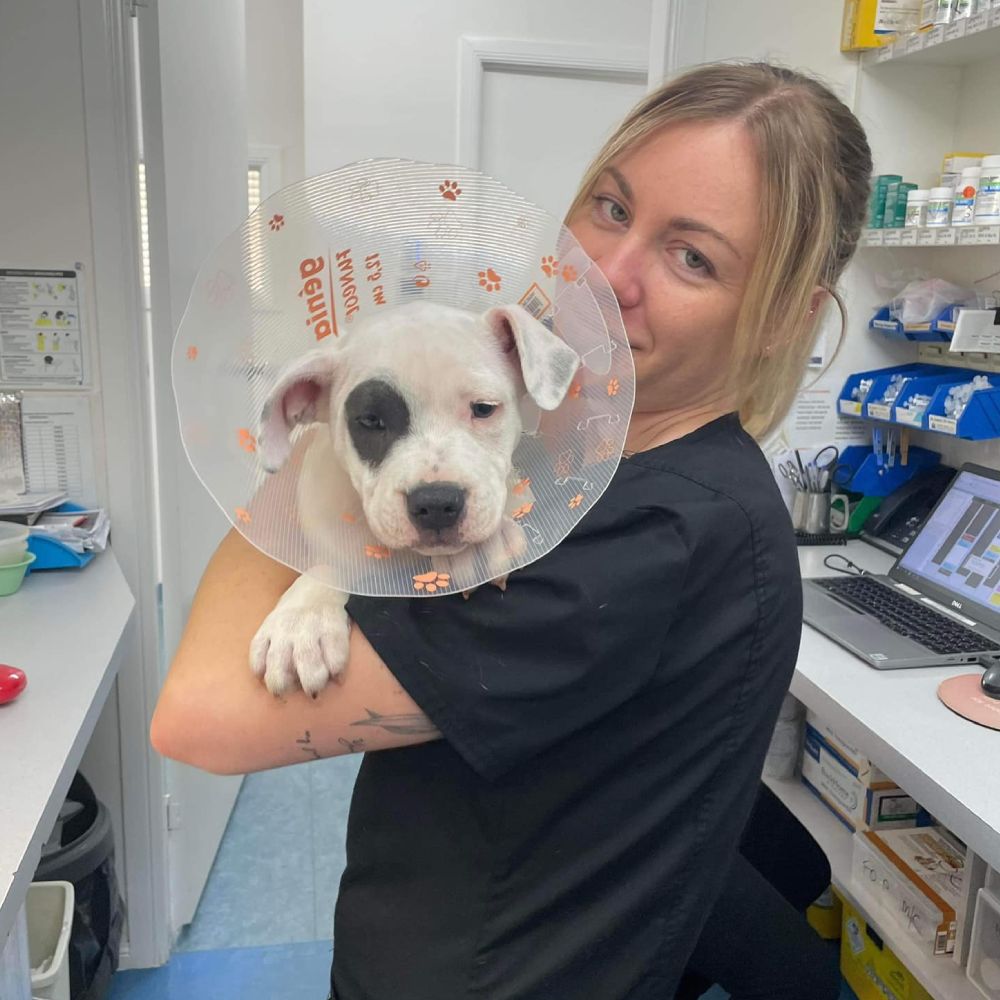Anaesthesia and Patient Monitoring
During surgery and other medical procedures, our team of veterinarians and veterinary nurses monitors all patients to ensure their safety. We monitor every procedure, regardless of whether it’s routine or more advanced. The type of anesthesia we use depends on the procedure. Some require general anesthesia, while others may only call for local anesthesia.
For more specific information on our protocols, please see the individual descriptions or contact us with any questions.

Tranquilisation / Sedation
If travel, thunder, or fireworks upset your pet, he or she may benefit from tranquilisation or sedation. While sedated, the animal will stay awake or sleep lightly but can be roused when stimulated. To minimise any potential risk associated with tranquilisation or sedation, we need to assess each animal individually before we dispense these medications.
Patient Monitoring and Comfort
We monitor our patients to keep them as safe as possible during procedures that require general anesthesia. A veterinary nurse will continually assess your pet’s heart and respiratory rate, blood pressure, ECG, Carbon Dioxide (CO2), Pulse Oximetry (PO2) and other vital signs to help reduce anesthetic risk. Patient comfort is enhanced during anaesthesia time through our investment in intravenous fluid warmers and state of the art warm air surgical blankets. Keeps them warm and cozy and speeds up their recovery time following their procedure. This investment in equipment and highly trained nurses is evidence of our commitment to your beloved pet’s safety.
You may be surprised to find out that very few veterinary hospitals in this area have dedicated as many resources to making sure your pet has state of the art care and comfort during anaesthesia as we have. If you are a client of ours you can be confident in knowing that we have done our best to give your family pet the best. If you are not yet our client, I challenge you to ask other veterinary hospitals in this area if they have committed to ALL of the same safety and comfort equipment that both the Greenway Drive and Kingscliff Vet Hospitals offer. If they have, congratulations, you have chosen a veterinary care team that has your pet’s safety and comfort as priority #1!
What we offer you is the expected standard of care for a Hospital of Excellence. You will not find another vet in the Tweed region with this Australia Small Animal Veterinary Association accreditation. That’s because we have dedicated our hospitals to maintaining high standards.
Their is a difference if you know what to look for and ask for. Demand excellence from us, we demand it from ourselves.
Please feel free to ask us about our patient monitoring protocol or any concerns you might have about your pet’s procedure.
General Anaesthesia
For some procedures, your pet will need to be administered general anaesthesia so that he or she will be unconscious and not feel pain. Many pet owners worry about their pets being administered general anaesthesia. We can assure you that modern anaesthesia is generally quite safe; to further lower any risk, we perform a physical examination and run blood work ahead of time to catch any underlying health issues. In addition, we follow a specific anaesthetic protocol, including monitoring vital signs during the procedure, to ensure the safety of our patients.
We begin most general anaesthetic procedures by administering a sedative to help the pet relax and decrease any anxiety and pain. We then administer an intravenous drug to provide complete anaesthesia and place a breathing tube into the patient’s trachea (windpipe). To maintain the state of unconsciousness, we deliver a gas anaesthetic in combination with oxygen through the breathing tube.
Please contact us if you have any questions or concerns about your pet receiving general anesthesia or about the procedure for which your pet is scheduled.

Local Anaesthesia
If your pet is having a minor surgical or diagnostic procedure performed, we sometimes use a local anaesthetic to help control pain. For example, when we perform a biopsy (in which a small portion of tissue is surgically removed so it can be examined), we often use a local anaesthetic. Local anaesthetics cause a loss of sensation in the area where the procedure is being performed. We sometimes use a sedative and/or anxiolytic (anti-anxiety medication) in combination with the local anaesthetic to keep pets calm during a procedure. We use LA for all surgical procedures including desexing, dental, lumps etc.
Please contact us if you have any questions or concerns about your pet receiving local anaesthesia or about the procedure for which your pet is scheduled.
If you have any questions about our anaesthetic and patient monitoring services at Greenway Drive & Kingscliff Vets, please don’t hesitate to contact us.
Contact Us
at Greenway Drive & Kingscliff Vet Hospitals
(Please do not use this form for bookings or emergencies)
Greenway Drive Vet
Address: 7/12 Greenway Drive,
Tweed Heads South, NSW, 2486
Phone: 07 5524 8111
Email: admin@greenwaydrvet.com.au
Kingscliff Vet
Address: 48 Wommin Bay Rd,
Chinderah, NSW 2487
Phone: 02 6674 1916
Email: admin@kingscliffvet.com.au